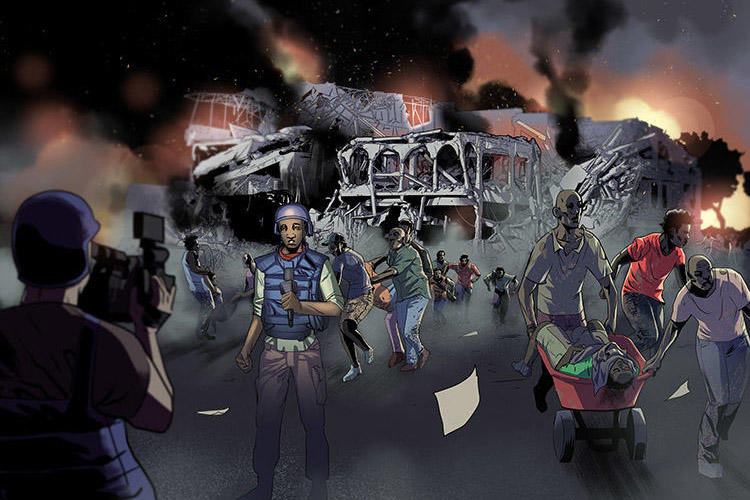The dynamics of a terrorist attack are fluid and threats can materialize quickly–from explosions and gunmen to knife attacks, vehicular attacks, or sieges.
To minimize the risks:
- Ensure that you have the appropriate personal protective equipment for the situation.
- Never become so focused on your work that you lose situational awareness. Events and the mood of a crowd can change quickly. Remain alert and prepared to move at all times.
- Keep in mind that first responders and the media are popular targets for terrorists and that secondary attacks are a risk. Positioning is crucial to your safety. Minimize your time at the scene and pull back to a safe distance to avoid being caught in any follow-up attack.
- During mobile coordinated attacks, the key is to keep moving. Assess every location that you find yourself in and identify exits and safety places.
- Avoid lingering in close proximity to large windows and wooden or damaged infrastructure.
- Try to remain on the edge of crowds, and be aware that they could turn hostile.
- Assess the safety of any live positions or stand-up locations for broadcast. Locations accessed easily by the public increase the risk of an emotional or aggressive individual trying to harm or disrupt you.
- If operating at night, be aware of a heightened risk from security forces and the public who may be more jumpy.
- Do not take your cue from other journalists who may have a different tolerance for risk. Always use your own judgment. While there can be safety in numbers, it can also lead to a false sense of security.
For additional information and tools for pre-assignment preparation and post-incident assistance, visit CPJ’s Resource Center.
